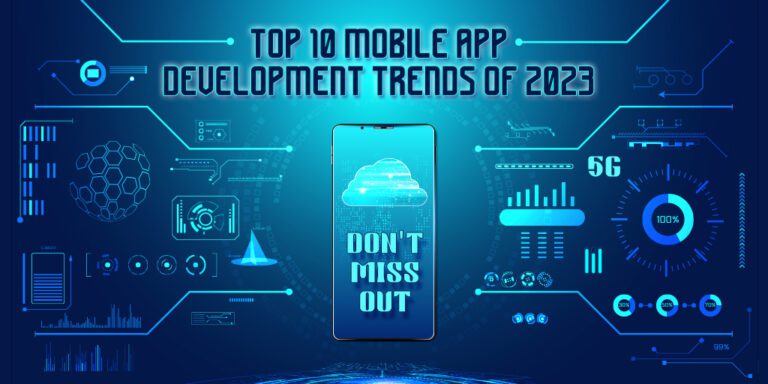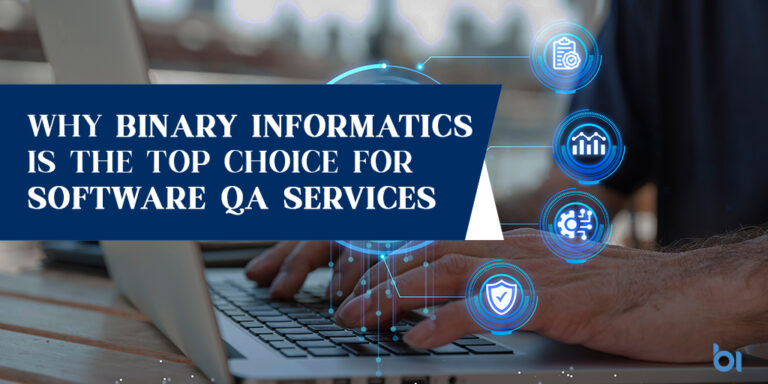To help you stay ahead of the curve, we’ve put together a list of the top 10+ mobile app development trends for 2023. These trends are shaping the future of app development. So don’t miss out: read on to learn more!
Top 10+ Mobile App Development Trends of 2023
1. AR and VR for Mobile App Development
Augmented reality (AR) and virtual reality (VR) are two of the most cutting-edge mobile app development trends of 2023. They may sound futuristic, but they’re already being used by businesses and consumers alike.
AR and VR offer a whole new level of engagement with users. By immersing them in an interactive experience, you can create an app that is more than just a simple . And with AR and VR becoming more widely available, don’t miss out on the chance to create an app that takes advantage of these technologies.
2. Cloud Computing in App Development
We’re already seeing the effects of cloud computing in app development, and it’s only going to become more prevalent in the coming years. With the cloud, developers can create apps that are faster, more efficient and better able to handle large amounts of traffic.
And that’s just the beginning. The cloud will also play a big role in the development of 5G networks, which will be crucial for handling the increased bandwidth and data demands of AR and VR apps. We can also expect to see more AI-powered features in apps, as well as more use of blockchain technology to secure data and protect users’ privacy.
So don’t miss out on the top mobile app development trends of 2023, make sure your business is prepared for what’s ahead.
3. Machine Learning and AI-Powered Apps
Machine learning and AI-powered apps are definitely one of the top mobile app development trends of 2023. With more and more people using AI Assistant tools like Siri and Alexa, it’s no wonder that app developers are looking to use this technology in their own apps.
Machine learning can help make apps more user-friendly, efficient and intuitive. It can also help with data analysis, which is essential for any business. With the ever-growing popularity of AI-assisted devices, it’s safe to say that machine learning will only become more important in the years to come.
4. Mobile Backend as a Service (MBaaS)
The fourth trend on our list is something that most people don’t often think about but is essential to the success of any mobile app—Mobile Backend as a Service, or MBaaS.
MBaaS is a cloud-based service that allows developers to quickly and easily build and manage the backend of their mobile apps. It saves them time because they no longer have to create an entire server architecture from scratch—the backend component is taken care of for them. It also enables them to keep up with the ever-evolving landscape of mobile technology without having to completely rebuild their whole system.
Ultimately, MBaaS makes it much easier for developers to keep up with the latest trends and get their apps “market ready” in a fraction of the time it used to take. It’s no surprise then that this trend is gaining momentum in the mobile development world.
5. Focus on Security and Privacy
It’s no surprise, but increasingly users are paying more attention to their data security and privacy. The ongoing pandemic, coupled with more companies turning to digital products and services, only increases users’ awareness of their data’s safety.
For developers, this means focusing on authentication measures to secure sensitive information and individual accounts. This could include making use of biometric authentication and encryption protocols, which can add an extra layer of security. For those developing on the cloud, adding multi-factor authentication will also be key.
Along with authentication practices, giving users control over their personal data should be a priority for developers, as people are increasingly becoming aware of data privacy rights and regulations such as GDPR and CCPA. This means providing clear policies about how customer or user data is used and stored. In addition, offering granular controls that let users determine how much of their personal data they are willing to share should be a must-do.
6. Internet of Things (IoT) in App Development
We all know that technology is evolving at an ever-increasing rate, and mobile app development is no exception. One trend that’s really catching on is the use of Internet of Things (IoT). IoT is about connecting various devices to each other to create a network. This network can be used for many things, including data collection and automation.
Using the Internet of Things in mobile app development can have many advantages from enhanced user experience and better data accuracy to improved scalability, flexibility and cost efficiency. With IoT, developers have access to increased amounts of data which can be used to create smarter algorithms and more powerful apps.
Furthermore, with the development of 5G networks, IoT capabilities are going to become even more advanced. This means that not only will app developers have access to more data, but they will also be able to process it much faster than before. As an added bonus, businesses can use this data to make smarter decisions when it comes to marketing or product development.
7. Wearable Technology Integration
We are well into the integration of wearable technology into the mobile app development world and it’s becoming more and more of an important factor. One of the biggest benefits of this is improved user experience, as a user can access their data on their wearable device, quickly and easily.
As such, it’s become increasingly important for developers to be able to integrate with these wearables like Apple Watch, Fitbit, and Google Glass. This means understanding their APIs and other technologies that are being used in order to create a seamless experience between the app and wearable device.
In addition to improvements in user experience, wearables can be used for data collection purposes. By leveraging the power of wearables to measure user behavior or vital signs, developers can better understand their users, tailor experiences based on that data, as well as inform any design decisions moving forward.
8. Voice User Interface (VUI)
Voice User Interfaces (VUI) are becoming increasingly popular, and for good reason. VUI allows users to interact with your app using voice commands, making it an incredibly fast and convenient way for users to get things done.
This is great for hands-free situations, like when you’re driving or cooking, or simply don’t want to waste time typing when you could be doing something else. It’s also a great option for those who may have accessibility issues, as it eliminates the need to type out text.
We anticipate that VUI will continue to grow in popularity over the next two years, as more and more apps look to add this feature. As such, now is the time to get ahead of the curve and start incorporating VUI into your app development plans if you haven’t already.
9. Multiplatform Apps and Cross-Platform Development
We can’t emphasize enough how important multi-platform development is becoming in the mobile app industry. As the use of mobile devices continues to grow, the need for multiple platforms is becoming even more important.
By creating a single app that can be used on multiple platforms, app developers are able to target a larger audience and maximize their reach. This also allows developers to save time and money by not having to create separate versions of their apps for each device type or OS.
Cross-platform development also allows developers to create a single codebase that can be used across multiple platforms, which makes it much easier to update and maintain your app. Additionally, cross-platform development frameworks such as React Native can help accelerate the development process so you can get your product out faster.
10. Instant Apps and Low-Code Platforms
The ninth trend we will discuss is the rise of instant apps and low-code platforms. These are apps that take up less space on a user’s device and can be used without any downloads. They allow developers to quickly push out updates, as well as making it simpler for users to find new content.
Low-code platforms, on the other hand, allow developers to create custom applications, without needing a huge development team or an intensive coding process. This makes it easier to develop and deploy apps faster, while still ensuring they have the same levels of security as traditional apps.
These technologies have become increasingly popular in recent years and are sure to continue their growth in 2023 as app developers look for easier ways to bring their creations to life.
11. 5G Network Connectivity
If you are looking to stay ahead of the curve, then the 5G network should be something you are keeping an eye on. In 2023, 5G is expected to reach its peak, and with its increased speed and reduced latency, it will have a major impact on mobile app performance. 5G will provide new opportunities for mobile app development, allowing for more complex apps and allowing for bigger data transfers.
Users will also be able to take advantage of better video streaming capabilities and augmented reality experiences. This will create a deeper level of engagement for users and open up new possibilities for mobile app developers. Thanks to 5G connectivity, mobile apps can now become even more interactive and immersive experiences.
12. Progressive Web Apps (PWAs)
It’s no secret that progressive web apps (PWAs) are on the rise. In fact, according to a recent report by Statista, PWAs are expected to make up more than half of all mobile app development by 2023. And there are good reasons for this.
PWAs are essentially website experiences that have been optimized for mobile devices. They offer many of the same features as traditional apps, but they’re much faster to load and don’t require installation. What’s more, they can be accessed offline, which is perfect for those times when you’re traveling or don’t have a reliable internet connection.
Businesses are starting to take notice of the benefits that PWAs offer, and we’re already seeing some great examples of them in action. If you’re looking to stay ahead of the curve in 2023, then progressive web apps should definitely be on your radar.
13. Cloud-Native App Development
Cloud-native app development is one of the top mobile app development trends to look out for in 2023. This approach allows developers to create apps that are designed to work in the cloud, using microservices and APIs.
This approach can be more efficient and scalable, as well as more secure, since the app is not dependent on a single server. It also makes it easier to update the app, since the updates can be made more quickly and easily.
Conclusion
So, make sure you stay up-to-date with the latest mobile app development trends so that your app can stay ahead of the curve and provide the best user experience possible. And who knows, maybe your app will be one of the trends of 2023!




